What to be aware of and learn while in these tidal flats. In
this are the tidal range (the difference in height between low tide
and high tide) is increased due dramatically to the topography,
ocean currents and winds of the region.
This location has a wonderful section of outcrops. Here one will
find folded metasedimentary (sedimentary rocks who have been
changed due to contact metamorphism) rocks and a relatively
unaffected intrusion of Iomai (Omey) Granite.
Omey Granite: Course grained, composed of
quartz, orthoclase, muscovite, aplite and biotite. Grains range in
size from 0.5 cm to 2.0 cm, with orthoclase comprising the largest
of these grains.
Biotite Metesedimentary Shist: Medium grained,
composed of biotite, muscovite, quartz and orthoclase.
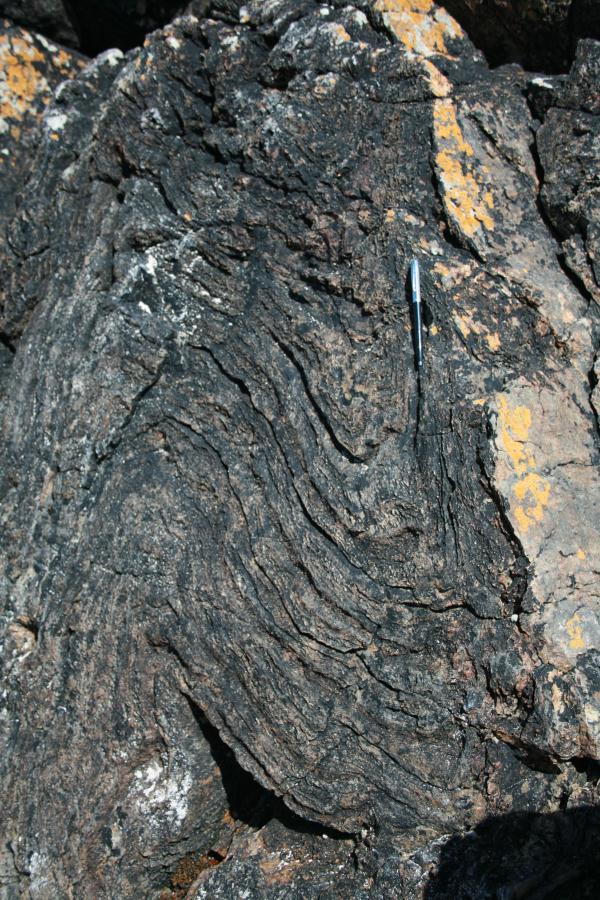
Skarn: Extream uneven grain size distrobution,
composed of grossular garnet, wollastonite, calcite, muscovite,
dolomite, vesovianite, diopside, hornfels and andalusite. Grains
range in size from 0.5 cm to 3.0 cm. (Best sites for locating
mineral samples)
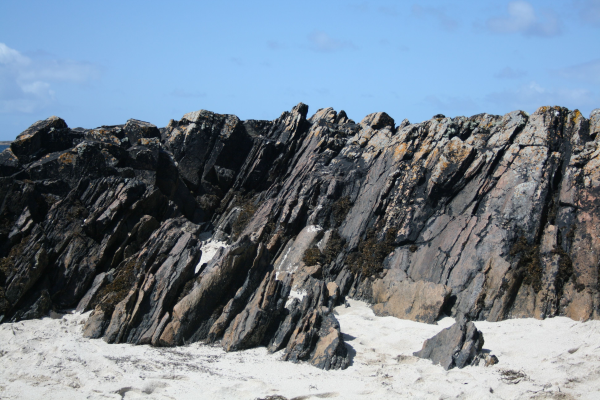
Deformation of rock involves changes in the shape and/or volume of
these substances. Changes in shape and volume occur when stress and
strain causes rock to buckle and fracture or crumple into folds. A
fold can be defined as a bend in rock that is the response to
compressional forces. Folds are most visible in rocks that contain
layering. For plastic deformation of rock to occur a number of
conditions must be met, including:
1. The rock material must have the ability to deform under pressure
and heat.
2. The higher the temperature of the rock the more plastic it
becomes.
3. Pressure must not exceed the internal strength of the rock. If
it does, fracturing occurs.
4. Deformation must be applied slowly.
A number of different folds have been recognized and classified
by geologists. The simplest type of fold is called a
monocline
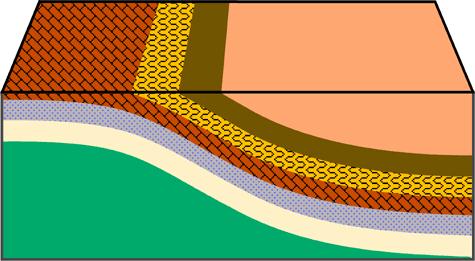
This fold involves a slight bend in otherwise parallel layers of
rock.
An anticline is a convex up fold in rock that resembles an arch
like structure with the rock beds (or limbs) dipping way from the
center of the structure.

A syncline is a fold where the rock layers are warped downward.
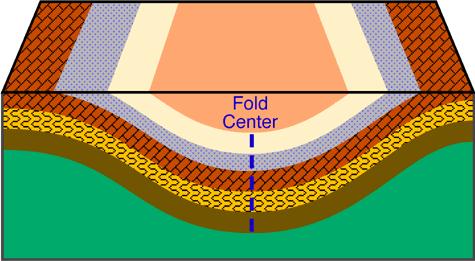
Both anticlines and synclines are the result of compressional
stress.
More complex fold types can develop in situations where lateral
pressures become greater. The greater pressure results in
anticlines and synclines that are inclined and asymmetrical.
A recumbent fold develops if the center of the fold moves from
being once vertical to a horizontal position. Recumbent folds are
commonly found in the core of mountain ranges and indicate that
compression and/or shear forces were stronger in one direction.
Extreme stress and pressure can sometimes cause the rocks to shear
along a plane of weakness creating a fault. We call the combination
of a fault and a fold in a rock an overthrust fault.
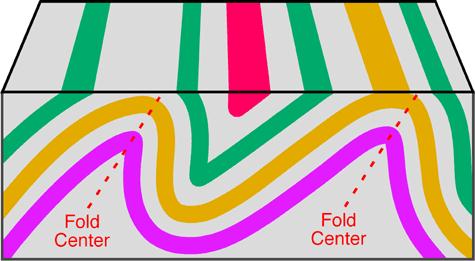
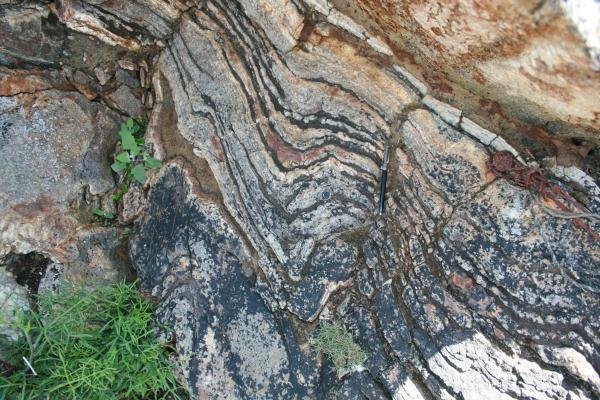
To Log this Earthcache
For below #1 and #2, send your answers to my profile email. DO
NOT post answers in the cache log. Every caching account logging a
find of this cache must send separate answers, and your answers
cannot simply be a cut and paste of another caching account's sent
answers.

Complete the following tasks:
1. Go along the beach and look for signs of folding. In
some areas you will find second and third generation folding events
that show smaller complete folds. To answer this send in a list of
GPS locations and the type of fold you believe to be
there.
2. Locate a contact zone between two rock types. To
answer this send a GPS list and why you think this is a contact
zone.
Happy hunting!
Time your arrival with the start of low tide as to maximize your
time and the walk is easier than climbing the outcrops. High tide
brings a whole new level to the area.? The amount of time for the
low tide to go into high tide is not very long so be on the watch
for the changes. A good idea is to get the local tide table in
village of Clifden the day before. I should know, personally have
spent several hours there during high tide.
For an extra spin see if you can locate and describe the human
effect of this area.
References
http://www.physicalgeography.net/fundamentals/10l.html